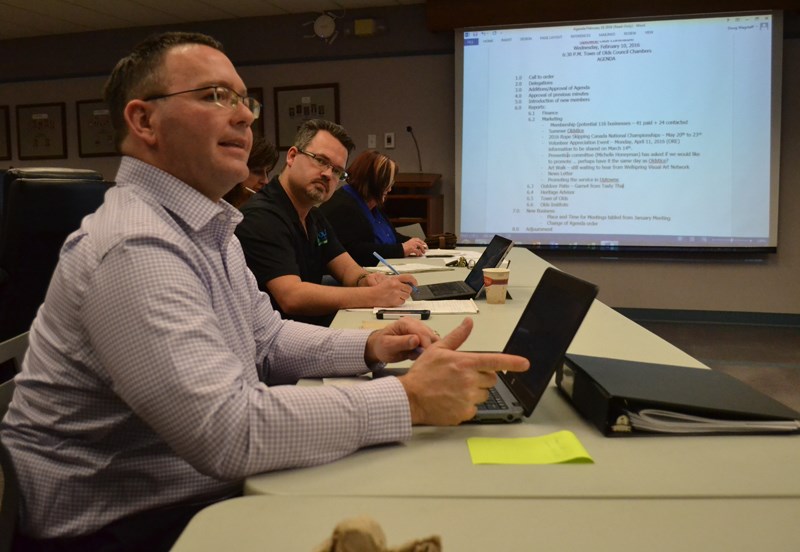The Town of Olds is losing $700,000 to $1 million worth of water a year, chief operating officer Doug Wagstaff says. Wagstaff made that statement during an Uptowne Olds committee meeting Wednesday (Feb.
The Town of Olds is losing $700,000 to $1 million worth of water a year, chief operating officer Doug Wagstaff says.
Wagstaff made that statement during an Uptowne Olds committee meeting Wednesday (Feb. 10) in town council chambers, saying the problem is water loss and infiltration into sewers.
That's a big issue, he said, because, as part of the South Red Deer Regional Wastewater system, the town pays for every cubic metre of water that runs through its sewer lines to Red Deer, where it's treated.
"That's a lot of money, when we're saying a one per cent tax increase is $80,000," Wagstaff said.
"That's becoming our number 1 priority. Because if we can capture even half of that seven hundred thousand to a million dollars a year that we're either literally flushing one way or the other – either out or in – that's a significant savings to us all, either in reinvestment or just not having to raise taxes."
"It could be great rainwater but we still have to pay for it."
He said the town plans to utilize provincial municipal sustainable infrastructure funding dollars to track down where that water loss is.
Wagstaff said as far as they can tell, the problem appears to be with sewer/water infrastructure in a part of town built primarily in the 1980s.
He said one part of the problem appears to be that some homeowners are directing water from their sump pumps into the sewer. Water main breaks and leaks appear to be other parts of the problem.
He said there's a reason it's believed cracks in the pipes are an issue.
"We know that's happening somewhere because when we have rain events, we're metering the sewer going out. You get a rain event and it goes up," Wagstaff said.
"It's kind of like playing a great big game of – there used to be an app you had on your phone, I think it was called 'pipes.' It's just like playing a real-life game of that – trying to find out where the water's going."
Committee member Mike Fix asked if the town could place some sort of dye in the water and trace it that way.
Wagstaff said town staff are installing meters in places where they think the problem might originate. But that tactic has its own issues.
"Part of that is sheer time, because one of the things is you've got to wait for it to rain and you might have metered off an area, which means we dig it up, put the meter in, watch it, and have a couple of rain events and see whether it spikes in that area. If it doesn't, then you dig it up again and put the meter somewhere else," he said.
[email protected]
"It's kind of like playing a great big game of – there used to be an app you had on your phone, I think it was called 'pipes.' It's just like playing a real-life game of that – trying to find out where the water's going."DOUG WAGSTAFFOLDS CHIEF OPERATING OFFICER



